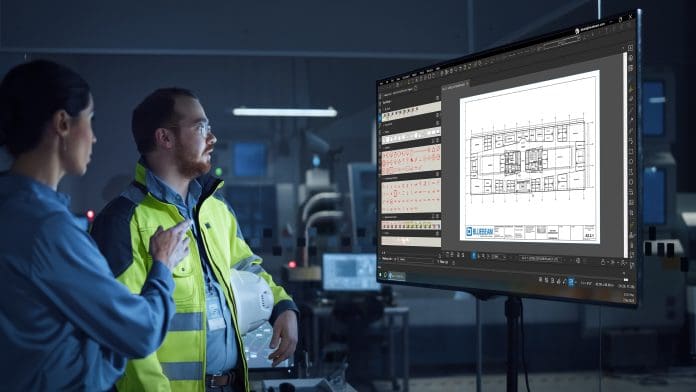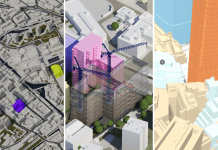From digital twins to robust data management, understanding AI’s role is crucial for staying ahead. Here, Bluebeam explores the strategies for successfully navigating AI in AECO
Artificial intelligence has the potential to revolutionise every aspect of the architecture, engineering, construction and operations industry – from initial designs to management and maintenance.
But despite headlines blaring about the latest advancements, it’s still early days for AI’s deployment.
Navigating this transformative technology can be challenging, requiring a shift in mindset, upskilling of the workforce, robust data management strategies – and caution.
How can firms navigate the coming AI revolution in construction and take advantage of the opportunities it presents?
It all starts with the right knowledge.
Here are five things we think you should know about AI:
1. There are different branches of AI
AI is a computer system that’s built to learn. Humans feed the technology information and the AI will analyse, solve problems or make decisions based on what it knows.
But there isn’t only one type of AI.
Branches include machine learning, natural language processing, generative AI, predictive analytics and AI robotics. All of which have the potential to impact the construction industry in different ways.
For example, with machine learning, data and algorithms, predictions about what might happen in the future – assessing risk, staffing, cash flow and profits – can be made faster and more accurately.
Or when paired with AI, robots can operate more independently, adapting to new conditions or information. In the AECO industry, AI robots are already guiding vehicles, plastering walls and monitoring jobsite progress.
2. Potential applications of AI in AECO industry
Some AECO companies are already wading into AI, harnessing the tools to limit mundane tasks and streamline work.
For example, AI can analyse swaths of data to identify patterns and uncover insights that
were previously stored away in scattered drawings, files, invoices and safety reports.
AECO companies use this information to improve design accuracy, streamline project management, bolster safety and calculate sustainability metrics.
Or, with AI-powered software, AECO companies can quickly update and iterate on designs, testing out the appearance and performance of different features.
It also allows for easier collaboration with owners and other stakeholders.
Using data from sensors and smart meters, AI can adjust heating, cooling and other energy use based on real-time occupancy data and climate information.
The technology allows building owners to reduce energy consumption, operating costs and environmental impact.
And when creating content, AECO companies are using AI to fine-tune proposals and client emails, plus organise and annotate meeting notes and transcripts.
3. Digital twins enable data-driven decision-making
Using AI, Internet of Things (IoT) sensors and other technology, digital twins are virtual replicas of existing buildings.
They can enhance real-time visibility into a building’s operations and enable data-driven decision-making.
The British professional services firm Arup estimates that digital twins can lead to a 15%-20% reduction in variable operating costs for office buildings and a 10%-15% improvement in tenant retention for office and industrial assets.
4. Implementation of AI-driven solutions
AI can help deliver better value at reduced costs, accelerate collaboration, boost the
sector’s flagging productivity levels and address other challenges.

Even if you’re not ready to fully invest in AI tools, it’s time to get ready for them:
- Identify pain points:
What problems could AI solve for your business?
- Invest in data infrastructure:
Ensure you have the right data infrastructure in place as you upgrade your technology.
- Strengthen data management:
Good data is required for effective AI algorithms, so ensure you’re storing good data now.
- Monitor and evaluate:
Stay abreast of the latest developments and AI use cases. Know what your competitors are doing.
- Upskill the workforce:
Find, nurture and train tech talent who have the skills to deploy AI now and into the future.
- Start small:
Wade into AI with a small pilot project. Consider partnering with an AI expert to guide your way.
5. AI-powered tools in Bluebeam
We’ve been focused on finding new ways to use technology to streamline processes for the AECO industry.
This includes AI-powered tools in Bluebeam and the launch of Bluebeam Labs, our innovation sandbox.
AI is behind some of our newest innovations, starting with three tools that aim to save the industry time by removing mundane and repetitive tasks:
- Auto Align simplifies the tedious and error-prone process of aligning points on drawings.
- Automatic Title Block Recognition extracts key information from drawings to automate the creation of title blocks.
- 3D Drawings uses AI to position flat drawings into a 3D space, giving users a new way to visualise their projects.
“We want to bring the industry forward,” said Don Jacob, Bluebeam’s chief innovation
officer and co-founder. “We want to build a bridge.”
Want the whole story of the coming AI revolution in construction?
Visit bluebeam.com and download the full ebook.
Bluebeam
Tel: +44 (0) 203 868 9061
sales.uk@bluebeam.com
www.bluebeam.co.uk
X
Facebook
Instagram
*Please note: This is a commercial profile.

















